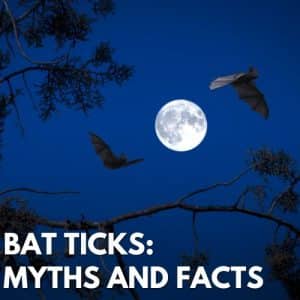
Spring and summer seasons are not always a merry for the travelers and the german population. Ticks are present throughout Germany, with their highest population in the areas of Bavaria and other southern regions, especially in dense wooden areas and broadleaf forests. Researchers suspected that the ticks might populate more in the coming years due to the rising temperature due to climate change.
Ticks are a problem to humans, pets, and other domestic animals as they tend to be vectors of various diseases. Lyme disease, one of the threatening tick diseases in the United States, Lyme disease is also a significant concern in Germany. This blog will discuss different types of ticks that you can find in Germany and their characteristics that can help you prevent yourself from those tick bites.
Types of Ticks in Germany:
Hyalomma:
It is derived from the Greek language. The hyalos mean crystal or glass, and omma translates to the eye. This belongs to a genus that has 27 ticks. Hyalomma is native to Iran or the South of the former Soviet Union. These ticks belong to the hard ticks family. They do not have shields or festoons. They possess banded legs.
The nymphs and larvae prefer mice, rodents, and rabbits. The adults may consume the blood of livestock and humans. Due to climate change and lack of hosts, these ticks have hybridized. The Lymph and Larvae of these Hyalomma ticks tend to be attached to hosts for 26 days.
Habitat:
- The Hyalomma ticks are capable of tolerating various climatic conditions and temperatures. They can survive in bushes, marshes, shrubs, and forestry grasslands.
- Hyalomma marginatum is the most common species found in Germany. They are two host ticks. These ticks are most likely to transmit the Bahig virus; The adult ticks are active from March to November. The activity can be high from April To May.
What hosts do they prefer?
The immature stages of Hyalomma marginatum feed on migratory and non-migratory birds. They also consume the blood from other small animals such as rabbits, mice, squirrels, etc.
The adults feed on cattle, sheep, goats, etc.
What diseases can they transmit?
These ticks can transmit the following diseases:
- Crimean–Congo hemorrhagic fever,
- Babesia caballi to horses
- Theileria annulata
Castor Bean Tick:
They are scientifically known as the Ixodes ricinus. These ticks can transmit both bacteria, protozoan, and viruses. They are vectors of the bacteria which cause Lyme disease. They are 0.43 inches long.
What is the ideal Habitat?
The Castor Bean ticks prefer high-altitude areas to survive. They live in deciduous forests. Climate change and land use have contributed to their habitat expansion. This kind of expansion has led to the spread of castor bean ticks to the urban areas of Germany.
The changes in the wildlife population directly impact these tick host preferences. Due to the increasing scarcity of large mammals, these animals tend to survive by consuming the blood of dogs, cats, hedgehogs, rats, foxes, or hares. If they are to prey on animals such as rodents, they may likely carry various pathogens.
Life cycle
The Ixodes ricinus life cycle can be as short as 2 to 3 years and as long as one to six years. This depends on the climate and the host availability. The females require a blood meal for reproduction. After a meal, they may lay up to thousands of eggs. These are three-host ticks, meaning they need a host in every part of the life cycle. Larvae that hatch from the eggs feed for 3 to 5 days.
What are the diseases they may transmit?
- Redwater fever: Babesia divergens, B. bovis, and B. ovis cause this disease.
- Lyme disease is caused by B. burgdorferi.
- Sheep tick pyemia (causative agent is Staphylococcus aureus)
- Cattle tick-borne fever (causative agent Anaplasma phagocytophilum)
- Q fever (causative agent is Coxiella burnetii)
- Boutonneuse fever (caused by the pathogen Rickettsia conorii, the bacterium Anaplasma marginale.)
- Alpha gal allergy.
In Horses, they infect them with Lyme disease, Anaplasma phagocytophilum, and
the viral infection louping ill. They also may cause tick-borne encephalitis,
Hedgehog tick
This tick is scientifically known as the Ixodes hexagonus. This belongs to the hard ticks category.
Description:
These ticks are red and have brown bangs on their legs. They have sclerosised scutum. The females have hexagonal-shaped shield-like structures on their backs.
Females engorged after feeding. After engorgement, their abdomen is beige or grey.
The female dorsal is medium compared to males, with the shield covering the entire endosome. In a ventral view, chelicerae are visible.
Females appear round than their male counterparts. The mouthparts are broader in the hedgehog tick than in the castor bean tick. Nymphs are fatter and shorter than adults and have better structure than the larvae. They have most of the body parts like that of the adults. There is an absence of genital opening in the nymphs.
Distribution:
- The hedgehog ticks are prominent throughout Europe, including Germany.
- This does not mean they are high in population in Europe. Instead, they are present in the continent.
- They may thrive in both rural and urban regions. They can be found in parks and gardens, not necessarily in forests or transitional zones of fields.
What are the hosts for hedgehog ticks?
These ticks feed both wild and domestic animals. According to studies, they feed for eight days, while nymphs and larvae feed for 4 to 17 days.
The hedgehog ticks feed on all small mammals. Their most preferable host is hedgehogs, and thus they are named after this aspect.
Ornate Cow Tick
These ticks are seen as a growing threat in Germany and throughout Europe. They are present in northern parts of Germany, especially on the island of Sylt in the North Sea. These ticks can disseminate and thrive in varying habitats and climates. They can rapidly and reproduce highly, with about 7200 eggs per female.
They are also vectors of various diseases. This is why the Dermacentor reticulatus is seen as a growing dangerous threat in all of Europe and Germany.
Some of the diseases spread by the Ornate cow tick are
- Rickettsia spp.,
- Babesia canis, or Omsk hemorrhagic fever virus
- TBEV Tick-borne encephalitis virus (TBEV).
Habitat
These ticks can live up to 4 years without a blood meal. They are known for their quick adaptability. Studies have proven that they can survive in freezing temperatures such as -10 degrees Celsius.
Hosts
They can consume blood from both wild and domestic animals.
The larvae feed for 2-6 days, while nymphs feed for 4 – 12 days.
They use the body odors of animals and humans to find them. According to studies they are more likely to survive than males. Males spend more time on hosts than females. They are most active from September to October and March and April. The males of the Dermacentor reticulatus feed for three to five days but live on the host for two to three months, while females consume the blood for two to three days.
They tend to feed in clusters. This habit results in skin lesions and high itchiness in the host.
Adults prefer medium to large mammals. These ticks are attached to their hosts from autumn to spring. The whole life cycle takes one year to complete. But if the ambiance for survival and the absence of hosts may extend the period of the life cycle to 2 years.
Conclusion
Ticks are a growing threat to many in Europe and Germany in particular. Due to the climate crisis and chemical resistance, Ticks are becoming a significant concern. Ticks are responsible for many diseases which cause deaths and long-term symptoms in humans and animals. Very few vaccines are available, so it is significant for keeping oneself safe.
If ticks are prevented, so can the diseases. People from urban and rural areas in Germany should be safe from ticks. Take specific preventive measures and government assistance to keep yourself free from tick bites and diseases.


